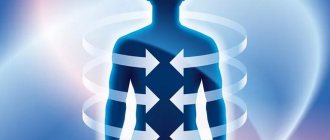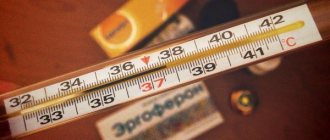Home — For the public
- Map of medical organizations
- Vaccination
- Clinical examination
- Fluorography
- Addresses and opening hours of clinics
- Emergency rooms
- Oncology
- Where to take an HIV test
- Healthy child's office
- Services
- Prevention of CVD
- Disease Prevention
- World Patient Safety Day
- Newspaper "Medical News"
- specialist
- School of Health
— Disease prevention
- HIV infection
- All about vaccination
- All about proper nutrition
- Hepatitis
- Flu
- Dementia
- Schoolchildren's health
- STD
- Tick-borne encephalitis
- Whooping cough
- Measles
- Legionellosis
- Meningococcal infection
- Oncology
- Acute intestinal infection
- Pediculosis
- First aid
- Pneumococcal infection
- Pneumonia
- Prevention of rabies
- Dependency Prevention
- Rotavirus infection
- Diabetes
- Cardiovascular diseases
- Injuries
- Tuberculosis
- Tularemia
- Physical activity
- Obstructive pulmonary disease
- Exotic infections
- Ecology
- Why is swimming in ponds dangerous?
— Cardiovascular diseases — How to quickly lower blood pressure at home
Consistently high blood pressure is a pathological condition indicating the development of a dangerous disease - hypertension. Arterial hypertension is the most common disease in the world. Without timely treatment, hypertension causes complications such as diseases of the cardiovascular system, kidney failure, and loss of vision.
The importance of high blood pressure as a risk factor in the development of cardiovascular diseases increases with age.
Normal blood pressure numbers
The movement of blood through a closed circulatory system is the joint work of the heart and blood vessels.
There are two indicators of blood pressure:
- Systolic (upper) pressure is formed during the period of myocardial contraction, when blood from the left ventricle is ejected into the vascular bed.
- Diastolic (lower) pressure is maintained in the vessels during the diastole phase - the period of relaxation of the heart after contraction.
The unit of measurement for blood pressure is the millimeter of mercury (mmHg). This is due to the fact that the first device in history to measure blood pressure was mercury, and the result was determined by the level of the mercury column. The International Association of Cardiology has determined the norm for blood pressure to be no higher than 130/80 mmHg.
In a healthy person, blood pressure changes during the day under the influence of external and internal factors: physical activity, stressful situations. This is a normal adaptive reaction. The body contains mechanisms of nervous and humoral regulation that return blood pressure to its original level after the cessation of the action of provoking factors.
Other Features of the DASH Diet
The main condition of this diet is that you need to eat foods filled with phosphorus, magnesium, potassium and calcium. Such products can improve heart function, remove excess fluid from the body, and strengthen the walls of blood vessels. Various foods are rich in nutrients:
- low-fat fermented milk (for example, yoghurts and curdled milk);
- pine nuts, hazelnuts, cashews;
- dried fruits (dried apricots, prunes, dates, raisins);
- citrus fruits, as well as apples, apricots and peaches;
- sea fish (tuna, cod, salmon);
- cereals in the form of oatmeal, rice, buckwheat;
- legumes (beans, lentils, peas);
- vegetables in the form of beets, sweet peppers, cabbage, carrots;
- berries (raspberries, gooseberries, rose hips).
The creators of a healthy diet for hypertensive patients do not want patients to suddenly switch to an unusual diet. Over time, the body of a hypertensive patient will be able to adapt to a new way of eating.
The medical doctor offers to make an appointment with a cardiologist. A full range of diagnostics and treatment of heart diseases in Tula. Tel. for appointment +7 (4872) 39-30-33.
What pressure is considered high
Provoking factors that cause increased blood pressure include:
- At a young age: smoking, addiction to alcohol, drug use, congenital anomaly of the renal vessels, vegetative-vascular dystonia, pathology of the adrenal glands, pituitary gland.
- With age, the role of obesity, endocrine pathologies (diabetes mellitus, hyperthyroidism), diseases of the cardiovascular system, kidneys, and in women - hormonal imbalance during menopause, and neuropsychic overload increases in the development of hypertension.
- In old and senile age, atherosclerotic changes in blood vessels come to the fore.
Arterial hypertension is diagnosed when systolic and diastolic pressure levels are equal to or greater than 140/90 mmHg. Art.
A persistent increase in systolic and diastolic pressure by 5-10 mmHg. Art. increases the incidence of strokes by 30-40%, and heart attacks by 25-30%.
Sample menu for the day
You can create a menu using the DASH method taking into account your basic taste preferences. From an extensive list of products, you can create different combinations of dishes. In the morning, cook 250 grams of oatmeal in water. Make a salad with fresh apples and carrots. Dessert will be a handful of prunes or a glass of grapefruit juice. For lunch, vegetable soup and baked sea bass fillet are suitable. Use a handful of walnuts as a snack. You can have dinner with low-fat cottage cheese and crackers. Fill your daily diet with vegetarian dishes. If you cannot immediately switch to plant-based products, then choose lean meats. The DASH diet is popular among men and women with hypertension. Sick people should follow simple recommendations to forget about high blood pressure.
Ways to lower blood pressure permanently
In the initial stages of hypertension, the first step is to prescribe therapy with non-drug methods associated with changing the patient’s lifestyle:
- To give up smoking. Tobacco smoking is recognized as one of the main risk factors for the development of arterial hypertension. One cigarette smoked leads to a sharp increase in blood pressure and increased heart rate.
- Normalization of body weight. Numerous studies have proven that losing weight in overweight or obese patients leads to stabilization of blood pressure.
- Increasing physical activity. Regular dynamic physical exercises in the air for 50-40 minutes at least 4 times a week are recommended.
- Reducing salt intake to 5 g/day.
- Limit alcohol consumption.
- Compliance with the work and rest regime.
- Balanced diet. Increasing the proportion of plant foods and low-fat dairy products in the diet.
While blood pressure is slightly elevated, following the principles of a healthy lifestyle can stabilize blood pressure at a normal level with minimal drug support or even without drugs at all.
As the disease progresses, hypertension is treated using medications from various pharmacological groups to achieve a reduction in blood pressure to normal levels.
First aid at home for symptoms of high blood pressure:
- It is necessary to reassure the patient and create conditions for physical and emotional peace.
- Provide a flow of fresh air into the room.
- Breathing exercises help to quickly reduce pressure: take a deep breath, hold your breath for 10 seconds, exhale noisily through your mouth, then take short breaths in and out through your mouth for 2 minutes.
- Give the patient Corvalol to drink: dissolve 30 drops in 100 ml of water.
If attacks recur repeatedly, you should consult a doctor to find out the cause of the increase in pressure.
Fast-acting drugs
Hypertensive patients from time to time face a situation where the pressure rises sharply. People who have been suffering from the disease for a long time keep on hand means to stabilize the indicator, which can reduce it in a short time.
List of drugs:
- Furosemide has an effect on reducing blood pressure approximately 20 minutes after administration. After 60-70, the maximum effect occurs, which is achieved by expanding the loop portion of the renal nephron and, consequently, increasing urination.
- "Anaprilin" helps reduce the rate in 15-20 minutes. The tablets are able to be quickly absorbed into the blood, and elimination occurs after 5-10 hours. In accordance with the instructions, you should take the drug 80 milligrams in two doses throughout the day. If the prescribed dose is ineffective, then the dosage is doubled. Suitable for stopping episodic attacks of tachycardia.
- "Captopril" is the gold standard for emergency medical care for high blood pressure. The medicine acts quickly, but lasts only three hours, so it is not recommended for continuous use for hypertension.
- "Adelfan" is a combination drug that constricts blood vessels and calms the nervous system thanks to the main active ingredients: reserpine, digidazaline. According to the instructions, take 0.25 milligrams 3 times a day. If necessary, the doctor may increase the dose. After a course of taking it, it is gradually reduced until completely eliminated.
- "Ebrantil" is an excellent choice for tachyarrhythmia due to high blood pressure. A new product with lightning-fast (at the end of a needle) effect. In tablets at a dose of 60 mg.
- "Physiotens" is a drug that affects the vasomotor center and cerebral cortex. An excellent modern medicine that quickly brings the indicator back to normal. It is produced in doses of 0.2 and 0.4 mg and is available for use 2 times a day.
How to measure pressure correctly
Rules for measuring blood pressure (BP):
Blood pressure is measured when a person is at rest: no earlier than 1.5–2 hours after eating, smoking, drinking coffee and other tonic drinks.
The best position for measuring pressure is when the person is sitting on a chair and the hand on which the pressure is supposed to be measured is placed on the table. The part of the arm on which the cuff is applied must be freed from pressure clothing and the muscles relaxed, as muscle contractions can lead to incorrect results.
The cuff, depending on the type of tonometer, is applied either to the lower third of the shoulder, not reaching 2.5 cm to the upper edge of the cubital fossa, or to the wrist.
While the tonometer is operating, it is important to maintain a motionless posture, do not move your hand, do not talk, or worry.
For the first time, the pressure is measured on both hands. If the difference between the readings does not exceed 10 mm Hg. Art., then subsequent measurements are usually performed on the non-working hand - for right-handers on the left, for left-handers - on the right. If the indicators differ by more than 10 mm Hg. Art. it is necessary to measure the pressure on the arm, where large numbers are recorded.
It is necessary to measure blood pressure, especially for people who have already been diagnosed with hypertension, twice a day: in the morning an hour after waking up and in the evening before going to bed. The number of measurements during the day varies depending on how you feel, if alarming symptoms appear indicating increased blood pressure.
Patients measuring blood pressure at home are advised to record the results in a special diary. Such blood pressure monitoring allows you to monitor blood pressure levels and evaluate the effectiveness of medications used to reduce blood pressure.
Blood pressure is measured using a special tonometer device.
Two modifications of tonometers are used:
- Mechanical
- Semi-automatic
Mechanical aneroid sphygmomanometers are used mainly in medical institutions, since their use requires certain knowledge and skills. The cuff is placed on the shoulder, air is pumped into its chamber using a rubber bulb, and tones are listened to using a phonendoscope.
For home use, it is better to use automatic or semi-automatic models of tonometers.
A semi-automatic tonometer works on the following principle: a cuff is fastened on the wrist, air is pumped into it with a bulb, which soon comes out automatically. At the end of the measurement, the results appear on the display.
To operate the automatic blood pressure monitor, simply place the cuff on your wrist and press the start button. All other actions occur automatically. Various types of automatic tonometers have been developed: with a shoulder cuff, wrist, finger.
What foods should you not eat?
It is necessary to gradually, and not suddenly, adjust the menu. All harmful foods should be excluded from the diet:
- sausages;
- various snacks;
- rich pastries and cakes should be replaced with fruit salads and smoothies;
- fatty meats;
- fast food;
- mustard, mayonnaise and sauces;
- spicy, fried and smoked dishes;
- garlic.
Foods filled with fat and sodium contribute to increased cholesterol. Such food should not be included in the diet of a hypertensive patient. The peculiarity of the DASH diet is that hypertensive patients do not completely give up salt. At first, patients can consume 1 teaspoon of salt per day. Gradually the amount of salt is reduced to 3 grams per day. Dishes can be supplemented with herbs (for example, thyme), lemon juice. Prohibited drinks include carbonated water and strong tea, alcohol, coffee and cocoa. Some hypertensive patients believe that a glass of red wine or a glass of vodka will not harm them. In reality, this opinion is wrong. Alcoholic drinks cause blood vessels to dilate and create temporary imaginary relief. Then the vessels narrow sharply, and as a result, the pressure readings on the tonometer increase. If you are hypertensive, then pay special attention to the DASH diet. Proper nutrition will help prevent recurrent attacks and pressure surges. To forget about hypertensive crises, you should strictly follow the DASH diet, developed by American doctors. With proper nutrition, the readings on the tonometer will be normal.
Symptoms of high blood pressure
Very often, the increase in pressure does not manifest itself for a long time. This is the insidiousness of hypertension. It is not for nothing that the disease is called the “silent killer” - for many years the pathological process progresses in the body: the heart, blood vessels, kidneys are destroyed, but the person feels well, so he does not go to the doctor.
Over time, the patient develops fatigue, headaches of varying degrees of intensity, decreased performance, and sleep disturbances. Damage to target organs causes pain in the heart, blurred vision, irritability, and decreased performance.
Signs of high blood pressure:
- Hypertensive crisis is a dangerous condition caused by a sharp increase in blood pressure to high numbers (190/120 mm Hg).
- Symptoms of a hypertensive crisis:
- A sharp headache, mainly in the occipital region.
- Tachycardia, shortness of breath, feeling of lack of air.
- Nausea, vomiting.
- Visual impairment.
- Dizziness.
Trying to lower your blood pressure on your own can lead to myocardial infarction or stroke. If symptoms indicating high blood pressure appear, you should immediately call an ambulance and urgently take measures to reduce the pressure.
Before the medical team arrives:
- Sit the patient down and place pillows under his back.
- Check pressure every 15 minutes.
- Hot foot bath for blood flow to the lower extremities. For this purpose, mustard plasters are also applied to the calves of the legs.
- An antihypertensive tablet under the tongue - Andipal, Capoten, Captopril.
Causes
Cycle disruption is, as a rule, not an independent disease, but the result of other problems or changes in the body.
- Hormonal imbalances or abnormalities. This is the most common cause of menstrual irregularities. Which is not surprising, since it is the endocrine system that completely regulates the menstrual cycle. Moreover, a malfunction can be caused not only by fluctuations in the level of sex hormones, but also by decreased or increased production of hormones of the thyroid gland, adrenal glands, and pituitary gland. However, in approximately 70% of women of reproductive age, cycle disorders are caused by increased levels of prolactin (hyperprolactinemia). In second place among hormonal causes is a change in the functioning of the pituitary gland, in which the excretion of follicle-stimulating and luteinizing hormones or their normal ratio necessary for ovulation deteriorates.
- Climax. Shortening the cycle and its irregularity is one of the manifestations of menopause. During menopause, the production of sex hormones decreases, their ratio decreases, the cycle becomes shorter, and menstruation gradually stops altogether. We must remember that menopause is a normal condition, not a disease. It occurs in all women. However, the appearance of an irregular cycle does not indicate menopause.
- Chronic stress. This reason partly overlaps with hormonal disorders. During stress, a high portion of prolactin is released into the blood; with constant stress, the level of prolactin will be constantly high.
- Diseases of the neuropsychic sphere. Psychiatric spectrum disorders are also often associated with hormonal problems.
- Infectious and inflammatory diseases of the genital organs, ovarian cysts, fibroids. Naturally, any disease of the reproductive system will somehow affect its functioning. When the temperature rises, which accompanies inflammatory diseases, ovulation may be disrupted; with genital infections, problems can affect the ovaries and uterus.
- Eating disorders – malnutrition or obesity. With insufficient weight, the activity of sex hormones decreases, since the body “understands” that in conditions of lack of nutrition it will not be possible to bear, give birth and feed viable offspring. Increased weight creates a problem for the proper functioning of most organs and systems.
- Taking medications: hormonal drugs, including contraceptives, corticosteroids, anticoagulants, tranquilizers, antidepressants. These drugs inhibit various functions of the endocrine and reproductive systems.
It is not always possible to establish the cause of menstrual irregularities and ways to return it to normal without additional examination. Therefore, if the cycle begins to differ from the usual in any of the parameters, you should definitely visit a gynecologist.
The initial examination for menstrual irregularities includes anamnesis (frequency of sexual activity, contraceptive methods, medications), external examination (allows you to get an idea of nervousness, stress level, the possibility of anemia), gynecological examination and smears, pelvic ultrasound, blood tests - general, biochemical, hormonal.
After the examination, the doctor will determine what caused the malfunction and how the cycle can be normalized, or he will prescribe clarifying examinations and, possibly, refer you to other specialists.
What is possible for hypertension and what is not?
High blood pressure imposes certain restrictions on human life. In order to avoid deterioration of the condition and the development of complications, it is important to understand what exactly needs to be abandoned.
Foods that can increase blood pressure
If you have high blood pressure, you should avoid or minimize the consumption of foods that contain large amounts of table salt (Fig. 1), namely:
- Processed foods such as smoked meats, sausage, bacon and ham.
- Canned goods, broths, dried soup mixtures.
- Condiments: ketchup, soy sauce, salad dressings.
- Frozen mixtures of potatoes, rice and semi-finished products.
- Snacks: popcorn, peanuts, chips.
- Marinated and brined products. In this case, it is recommended to use marinades based on vinegar and lemon juice as an alternative.
Figure 1. High-salt foods that are harmful to patients with hypertension.
Source: heart.org It is also recommended to completely eliminate foods that contain saturated fats and trans fats from your diet.
Trans fats are man-made fats that are a byproduct of the hydrogenation of unsaturated fats. They increase the level of “bad” cholesterol (low-density lipoprotein, LDL) and reduce the level of “good” cholesterol (high-density lipoprotein, HDL), which leads to atherosclerotic disease and the progression of hypertension. Saturated fats also increase LDL levels in the blood.
The main sources of trans fats are:
- Margarine.
- Sweets made with margarine: a variety of cakes and muffins.
- Fast food and deep-fried foods, such as French fries.
- Chips, crackers.
Saturated fats are mainly found in animal products, such as:
- Full fat milk and cream.
- Butter.
- “Red” meats: horse meat, beef, lamb, pork.
- Chicken skin.
Sports activities
Exercise promotes overall health, helps maintain a healthy body weight and normalize blood pressure in the long term. However, the loads should be moderate, since directly during exercise, blood pressure rises the more, the more active the workout.
The preferred activities for hypertension are cardio or aerobic exercise, which includes:
- Walking and jogging.
- Jumping rope.
- Riding a bicycle or exercise bike.
- Skiing and ice skating.
- Rowing.
- High or low impact aerobics,
- Swimming and water aerobics.
Air travel
Air flights are inevitably associated with surges in blood pressure. In this regard, before traveling, it is recommended to seek advice from your doctor. A specialist will help you assess the risks and properly prepare for the flight or justify the need to choose another type of transport.
In most cases, the following categories of people should avoid air travel:
- Persons with blood pressure readings more than 150/100 mmHg, even while taking medication.
- People with severe fear of flying and a tendency to panic attacks.
- Patients with concomitant cardiovascular pathologies, such as heart failure, thrombophlebitis, varicose veins, recent myocardial infarction or transient ischemic attack.
Visiting the sauna and bathhouse
Baths and saunas can also increase blood pressure, so you should be especially careful when visiting them. Direct contraindications are similar to those for air travel.
At the same time, there are studies that have shown the positive effect of the sauna on the human body with hypertension in the long term. Therefore, in the absence of contraindications, such procedures are permitted, but with a number of conditions:
- Use the sauna or bathhouse for a short time - 10 to 15 minutes per session.
- Avoid very high temperatures.
- Avoid rapid movements between very cold and hot environments, such as jumping from a sauna into snow or cold water.
- Do not visit the sauna or bathhouse alone. At the same time, companions should know what needs to be done if the condition of a person with hypertension worsens.
Nutritional supplements
Biologically active food supplements (BAS) can improve the general condition and course of hypertension. They should be used after consultation with a doctor (Fig. 2).
Figure 2. Some dietary supplements used in the treatment of hypertension. Source: MedPortal, wikipedia. org
Supplements that contain the following active substances are popular:
- Coenzyme-Q10. Strengthens the myocardium and improves its function, thereby stabilizing blood pressure.
- Vanadium. Capable of lowering blood pressure.
- Beta glucan. Reduces blood cholesterol levels, preventing atherosclerotic vascular damage and the development of hypertension.
- Lipoic acid. Directly reduces blood pressure in people with hypertension. Contraindicated for pregnant and nursing mothers.
- Vitamin C. Reduces blood pressure in people with hypertension, and in the long term strengthens the vascular wall, which also has a positive effect on the functioning of the cardiovascular system.
Hypertension and pregnancy
Pregnancy is also often accompanied by sudden jumps in blood pressure. However, existing hypertension can cause complications associated with bearing a child. Most often they occur in the second half of pregnancy and include:
- Late miscarriage.
- Premature birth.
- Preeclampsia and eclampsia.
- Intrauterine growth retardation.
In addition, high blood pressure increases the risk of postpartum hemorrhage, which is one of the most dangerous complications.
Therefore, pregnant women are advised to undergo clinical observation by a therapist with a frequency of examinations once a month during the first half of pregnancy and 2 times a month in the second, as well as appropriate antihypertensive therapy. Also, a regular examination by an ophthalmologist, fetal ultrasound, ECG and ECHO-CG should be carried out regularly.









